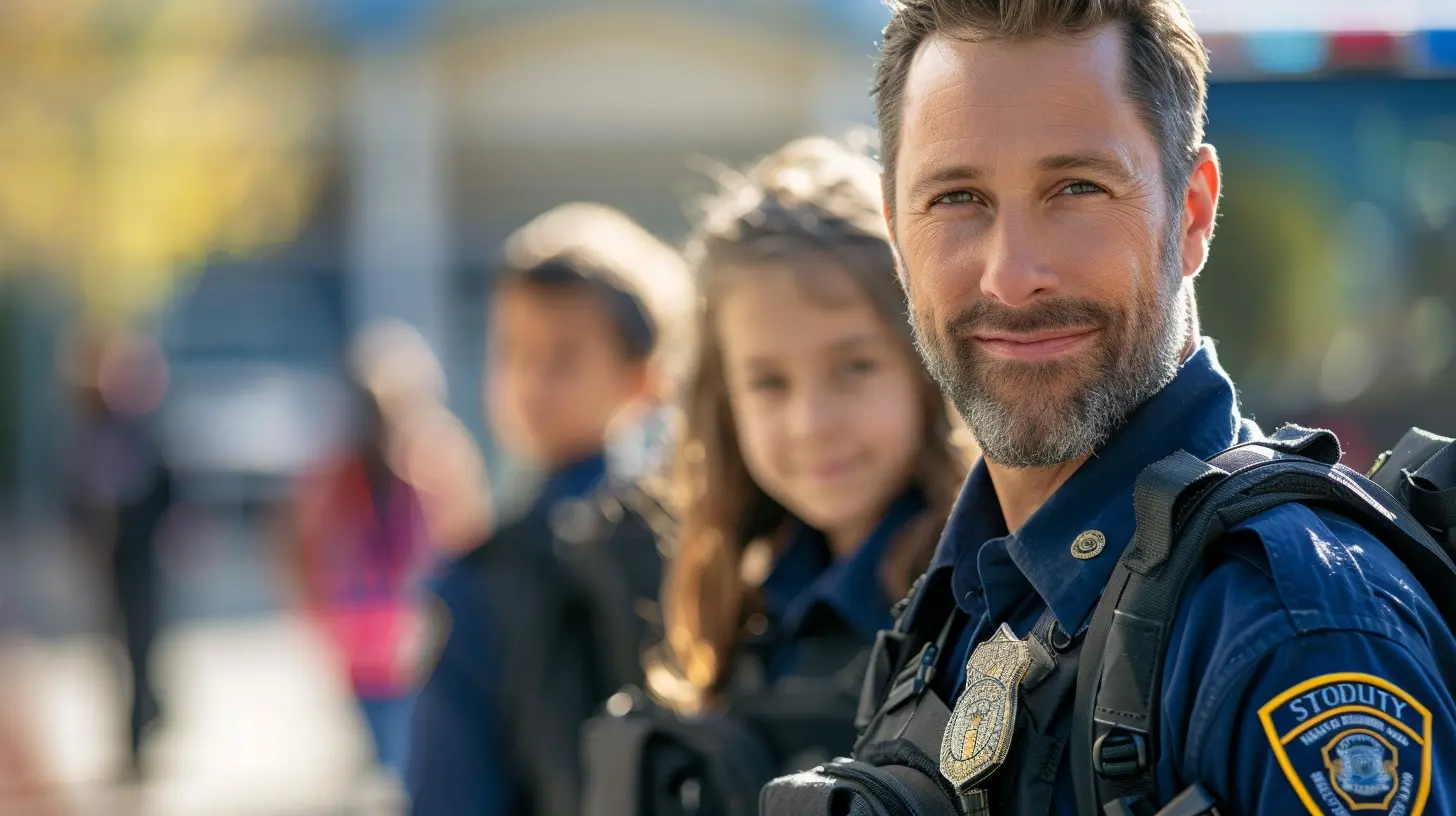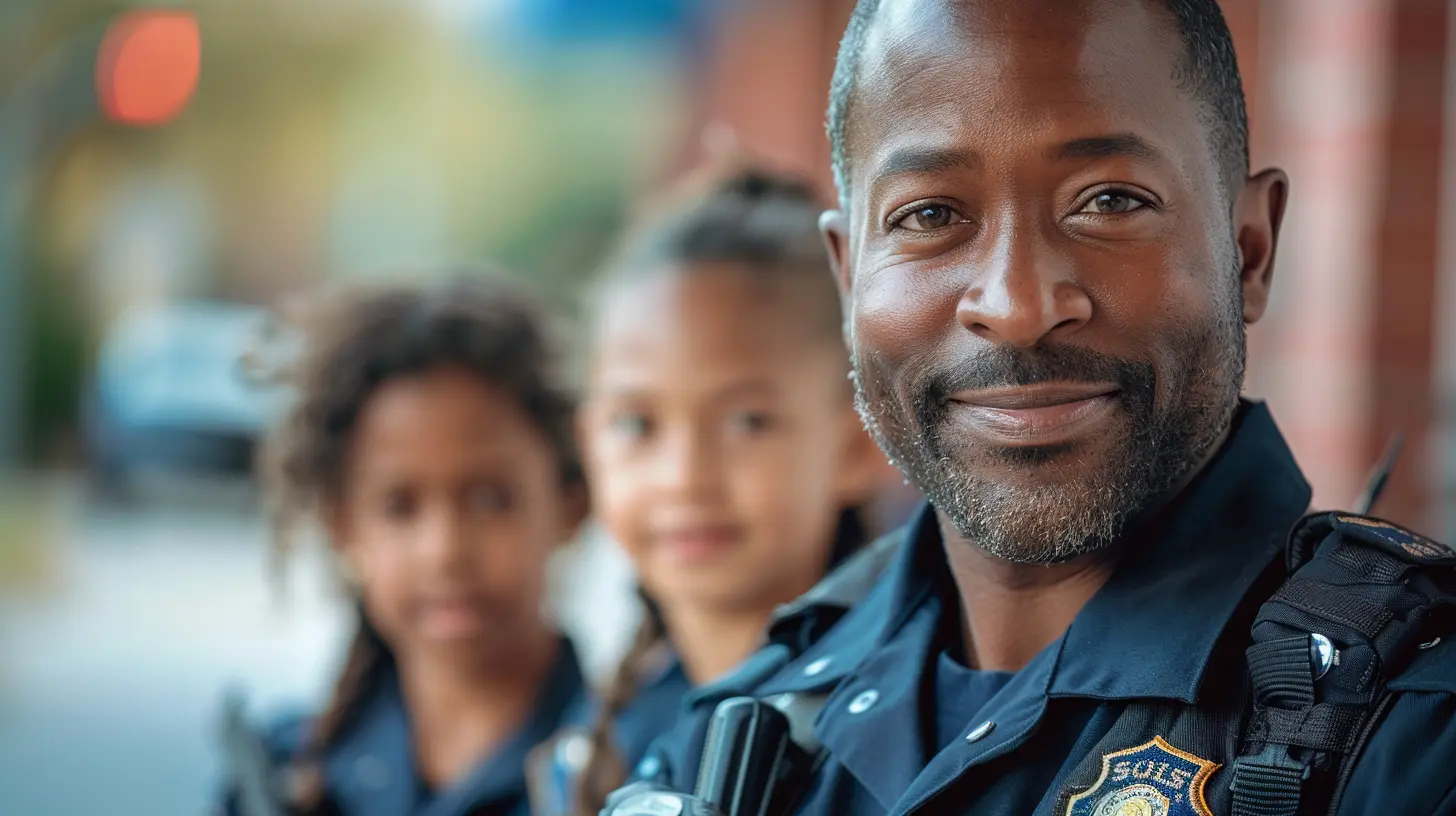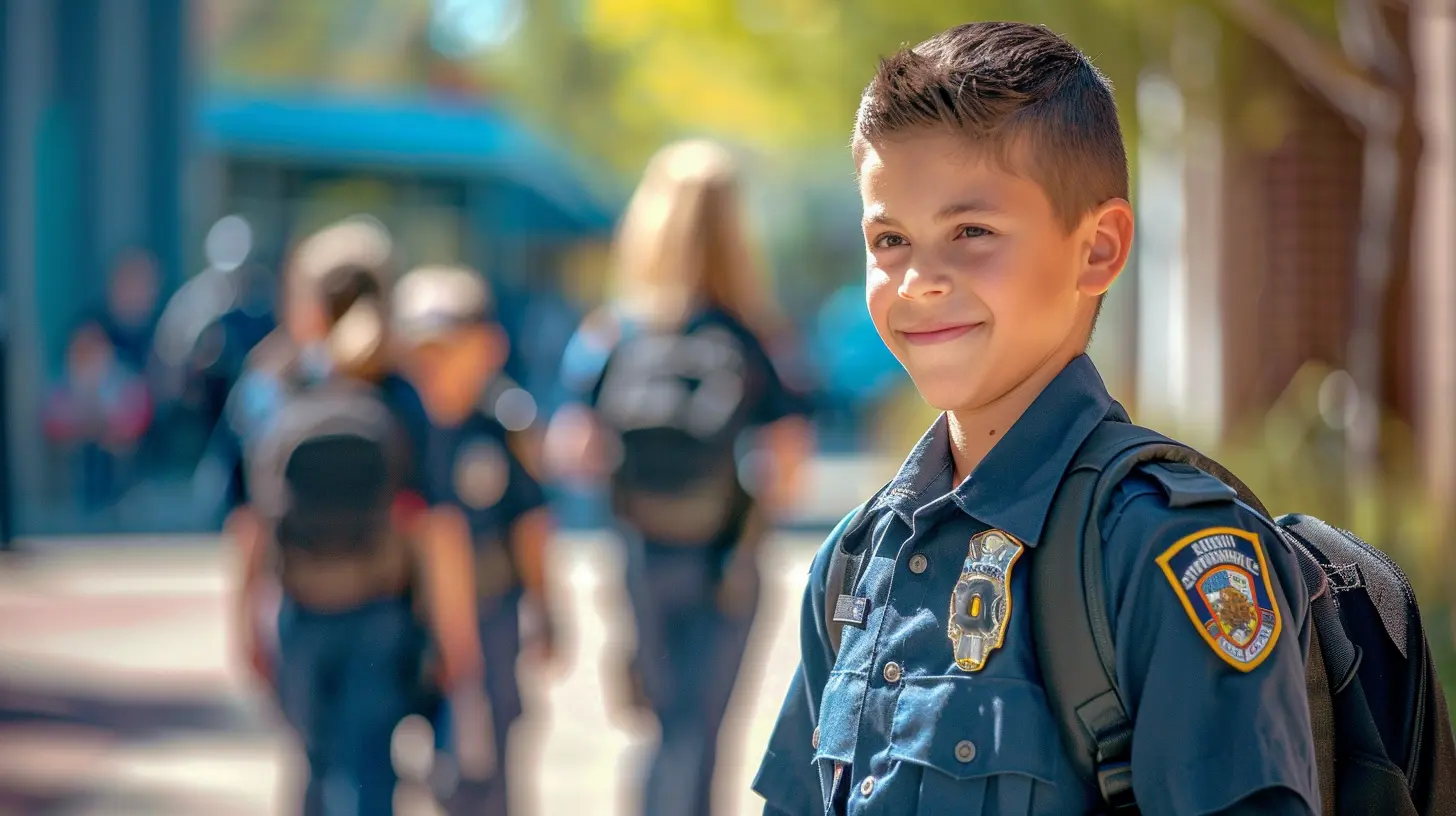The Role of SROs (School Resource Officers) in Enhancing School Safety
18 August 2025
Let’s just be honest—school safety is a hot topic, and for good reason. As parents, teachers, students, and community members, we all want one thing: for schools to be safe, nurturing environments where kids can actually focus on learning instead of worrying about what could go wrong. That’s where School Resource Officers (SROs) come into play.
You’ve probably heard about SROs in the news or maybe seen one on your child’s school campus. But what exactly do they do? And are they really making schools safer, or just adding more uniforms to the hallways? Let’s break it down, piece by piece, so you can get the full picture.

What Are School Resource Officers (SROs)?
Alright, first things first—what is an SRO, anyway? In the simplest terms, a School Resource Officer is a law enforcement officer assigned to a school. They're not just there to patrol the halls or catch kids skipping class. Their role is threefold: law enforcement, education, and counseling.Yep, you read that right. They're not just cops—they're also mentors, educators, and community liaisons.
Think of them as bridges between the world of law enforcement and the school community. Their presence is meant to prevent rather than punish.

A Brief History of SRO Programs
To understand where we are today with SROs, it helps to know where the concept started. The School Resource Officer program began back in the 1950s in Flint, Michigan. The idea was to build positive relationships between police and youth. Over time, especially after tragic incidents like the Columbine High School shooting in 1999, the number of SROs across the U.S. skyrocketed.These incidents highlighted the need for on-site protection and immediate emergency response. Since then, the role of SROs has evolved—and not without controversy (more on that later).

The Core Duties of an SRO
So, what does a typical day look like for an SRO? Spoiler alert: It's not all about catching rule-breakers.1. Law Enforcement Within the School
This is the most obvious role. SROs enforce laws, investigate criminal incidents, and ensure the physical safety of all students and staff. But their focus isn’t on minor school rule violations—that’s left to school administrators. Their job is to handle real legal matters and prevent more serious incidents, like fights, drug use, or weapons on campus.2. Educator Role
You might be surprised, but many SROs spend time in classrooms. They often give talks on issues like cyberbullying, drug prevention, or the consequences of violence. By educating students early, they aim to prevent issues before they start.3. Mentorship and Counseling
This might be the most underrated part of the job. SROs frequently build one-on-one relationships with students. They become trusted adults that students can turn to when they’re in trouble—or just need someone to talk to. It’s not all handcuffs and citations, trust me.
Do SROs Actually Make Schools Safer?
This is the million-dollar question, right? There’s no one-size-fits-all answer, but let’s take a look at the pros.✅ Immediate Response to Threats
When danger strikes, seconds matter. Having an SRO on campus ensures there’s someone trained and armed who can respond immediately. That peace of mind alone is worth a lot to many parents and teachers.✅ Relationship Building
SROs who take the time to build trust can become part of the school culture. They know the students by name. They understand the rhythms of the school day. They can sense when something’s off. That kind of embedded presence can be powerful in preventing incidents before they escalate.✅ Deterrent Effect
Just knowing there’s a trained officer on-site can discourage would-be troublemakers. It’s kind of like having a security system sign outside a house—it might make someone think twice.Challenges and Controversies Surrounding SROs
Now, it's only fair to look at the flip side. Not everyone agrees with having SROs in schools—and the criticism is valid in many cases.⚠️ Over-Policing of Minor Incidents
One major concern is that having police officers in schools can lead to the criminalization of typical teenage behavior. Instead of a trip to the principal’s office for a fight or disruptive behavior, a student might end up with charges.This has especially affected students of color and those with disabilities, leading to serious questions about equity.
⚠️ Trust Issues with Students
Let’s be real—not every student feels comfortable around police officers. If a student comes from a community with a history of tense police relations, having an officer in school might actually make them feel less safe, not more.⚠️ Budget Concerns
Hiring SROs isn’t cheap. Some argue that the money could be better spent on counselors, mental health services, or restorative justice programs that deal with the root causes of violence and behavioral issues.
Balancing Safety and Student Support
Here’s where things get nuanced. School safety isn’t just about preventing school shootings—it’s also about creating an environment where students feel safe enough to be themselves. That includes mental, emotional, and physical safety.An SRO might help prevent violence, but a guidance counselor helps a student cope with grief or anxiety. So, the question becomes: Why not have both?
That's where a comprehensive school safety plan comes in. SROs can be part of a team that includes mental health professionals, social workers, and educators. When they work together, the results can be powerful.
What Makes a Great SRO?
Not all SROs are made equal. The ones who are most successful tend to follow a few golden rules:- They build relationships first.
They know that trust isn’t given—it’s earned. These officers take time to get to know students and staff. They show up to school events, cheer on at games, and support students outside of crisis moments.
- They separate discipline from law enforcement.
Good SROs don’t step in unless the issue is a legal matter. They trust school staff to handle behavioral problems and focus on actual threats to safety.
- They undergo specialized training.
Working in schools isn’t the same as patrolling city streets. The best SROs get training in child development, conflict resolution, de-escalation, and cultural awareness.
The Role of Community Input
If we’re going to have SROs in schools, communities need to be part of the conversation. Parents, students, teachers, and local leaders should all have a say in what the role looks like—and who fills it.Some school districts have even created review boards to oversee SRO programs and ensure accountability. That kind of transparency goes a long way in building trust.
Alternative Models: Are There Other Options?
Some schools have taken different routes to enhance safety. Instead of traditional SROs, they invest in:- Restorative justice programs
- Peer mediation
- Mental health services
- Increased teacher training in conflict de-escalation
These alternatives can go hand-in-hand with—or in place of—SROs, depending on the needs of the school community.
The Future of SROs in Schools
No doubt, the debate around SROs will continue. But one thing’s for sure: protecting students is non-negotiable. The challenge is doing that in a way that supports all students, especially the ones who often feel left out or overlooked.The future of SROs may see more integration with student support systems, more specialized training, and more robust community oversight. Ideally, we move toward a model where SROs aren't just seen as security—but as trusted allies in the everyday life of a school.
Final Thoughts: One Size Doesn’t Fit All
At the end of the day, every school is different. What works for a large urban high school might not make sense for a small rural middle school. The key is balance. It’s about finding that sweet spot where safety and student well-being go hand in hand.So, are SROs the silver bullet for school safety? Not exactly. But when done right—with the right people, the right training, and the right balance—they can play a vital role in keeping schools not just safe, but supportive.
Let’s keep the conversation going, ask the hard questions, and never stop striving for schools that are both secure and welcoming to every student who walks through the door.
all images in this post were generated using AI tools
Category:
School SafetyAuthor:

Bethany Hudson
Discussion
rate this article
1 comments
Natalie McNair
While SROs can bolster school safety, it’s crucial to balance security with supportive student engagement. Are we creating safer spaces, or just reinforcing a culture of fear? Thought-provoking dynamics at play!
September 7, 2025 at 12:54 PM

Bethany Hudson
Thank you for your insightful comment! Striking the right balance between safety and student engagement is essential. It's important to ensure SROs foster a supportive environment while effectively addressing security concerns.


